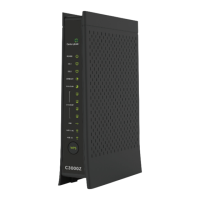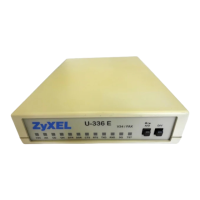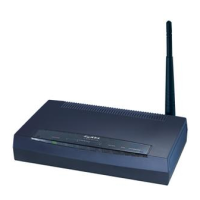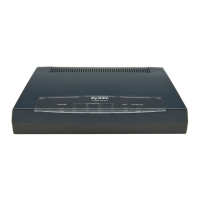eir F1000 Modem User’s Guide
Chapter 2 The Web Configurator
Table 2 Navigation Panel Summary (continued)
Use this screen to configure the wireless LAN settings and WLAN
authentication/security settings.
Use this screen to configure multiple BSSs on the Device.
Use this screen to block or allow wireless traffic from wireless devices
of certain SSIDs and MAC addresses to the Device.
Use this screen to configure and view your WPS (Wi-Fi Protected
Setup) settings.
Use this screen to enable or disable Wi-Fi MultiMedia (WMM).
Use this screen to set up Wireless Distribution System (WDS) links to
other access points.
Use this screen to configure advanced wireless settings.
Use this screen to scan wireless LAN channel noises and view the
results.
Use this screen to configure LAN TCP/IP settings, and other advanced
properties.
Use this screen to assign specific IP addresses to individual MAC
addresses.
Use this screen to turn UPnP and UPnP NAT-T on or off.
Use this screen to configure IP alias and public static IP.
Use this screen to have the Device automatically create static DHCP
entries for Set Top Box (STB) devices when they request IP
addresses.
Use this screen to configure the role of the WAN port. It can be either
the Ethernet WAN or a LAN port.
Use this screen to control the VLAN ID and IEEE 802.1p priority tags
of traffic sent out through individual LAN ports.
Use this screen to remotely turn on a device on the network.
Use this screen to view and set up static routes on the Device.
Use this screen to forward DNS queries for certain domain names
through a specific WAN interface to its DNS server(s).
Use this screen to configure policy routing on the Device.
Use this screen to configure Routing Information Protocol to
exchange routing information with other routers.
Use this screen to enable QoS and traffic prioritizing. You can also
configure the QoS rules and actions.
Use this screen to configure QoS queues.
Use this screen to define a classifier.
Use these screens to configure QoS policers.

